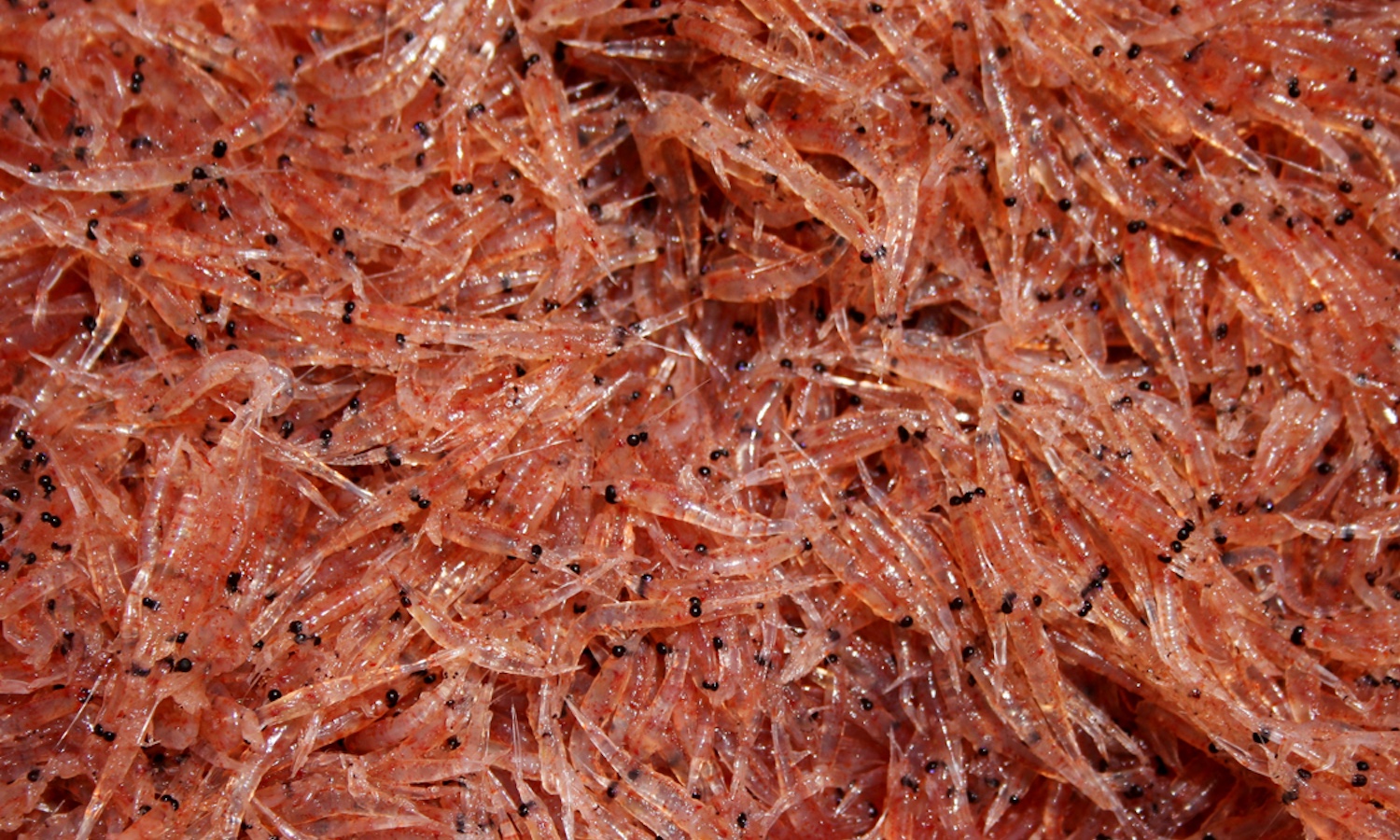Antarctic krill fishing has exponentially increased by over the past two decades by 400 percent, according to a report from the Commission for the Conservation of Antarctic Marine Living Resources. As the krill fishing industry expands across the aquaculture and pharmaceuticals industry, scientists express concerns that these sectors will decrease krill’s carbon sink capacity and create competition for krill’s natural predators.
Catches in the Antarctic region are almost entirely driven by krill, according to the U.N. Food and Agriculture Organization’s (FAO) The State of World Fisheries and Aquaculture report. The report reveals that 455,000 tonnes of Antarctic krill were captured in 2020, a sharp increase from the less than 100,000 tonnes captured in the late 1990s.
Aquafeed has used krill meal to accelerate fish growth and improve the color and taste of shrimp tails for decades. Carrying key nutrients and essential fatty acids, krill can augment fishmeal and other expensive ingredients in aquaculture feed without the burden of poor feed performance, according to the Global Seafood Alliance. Despite krill’s remote concentration in the Southern Ocean, the commercial desirability for harvesting krill is high.
The global aquaculture industry has grown rapidly in recent decades. According to the State of World Fisheries and Aquaculture report, the industry grew from supplying a mere four percent of fish 70 years ago to accounting for over half of the fish eaten in 2018. The global growth of fish farming has driven the demand for Antarctic krill as an alternative to wild fish in fish feeds, according to a report from the Changing Markets Foundation.
While growth in the aquaculture industry has expanded demand for krill, the National Oceanic and Atmospheric Administration (NOAA) believes the more recent discovery of krill’s nutritional benefits has also contributed to the increased krill fishing demand in the pharmaceutical sector.
“The dietary supplement part of krill fishing has changed the nature of the fishery to show a way to make more valuable products from krill than people realized was possible,” Dr. George Watters, Director of the Antarctic Ecosystem Research Division at NOAA, tells Food Tank.
Because of growing demand, the Commission for the Conservation of Antarctic Marine Living Resources (CCAMLR) has regulated the total krill catch within a 620,000 tonne ‘trigger’ level distributed across four regions in the southwest Atlantic. Although CCAMLR set an overall catch limit of 5.62 million metric tons a year, the trigger level was set to prevent the krill fleet from concentrating its fishing in small areas. If the specified catch limit for a subarea is reached, the fishery will close to avoid potential impacts to the local ecosystem.
Watters, the U.S. Representative to the Scientific Committee for CCAMLR, says that quotas are just one of the management problems they are facing in creating a more adaptable system. He says that developing protective zones in the Antarctic could also help regulate fishing to ensure krill’s natural predators have access to food.
Yet a study from CCAMLR finds that even with precautionary quota systems and protective zones, harvesting Antarctic krill has an outsized impact on predators further up the food chain. Krill feed on phytoplankton, acquiring energy to make them a vital food resource for a number of predator species whales, seals, fish, penguins, and a range of seabirds.
Watters explains including how this challenge is exacerbated by the uneven and ever-changing distribution of krill across the ocean.
“You have all of this krill passing by, but sometimes natural variation can cause periods of low performance for predators,” Watters tells Food Tank. “This causes you to think about how it’s not just the total amount of krill that’s important, it’s the nature of the krill swarms.”
Krill are also essential climate crisis mediators, making the Southern Ocean one of the largest carbon sinks in the world. According to Big Blue Ocean Cleanup, krill consume phytoplankton that store carbon and release oxygen, and then excrete this carbon in tiny pellets that sink to the ocean floor.
The complex nature of krill as both a keystone species in the Southern Ocean and a commercially desired resource has contributed to variability regarding the future of krill fishing. Simon Seward, EVP of Human Health & Nutrition for Aker BioMarine says many data gaps still exist, especially as climate crisis impacts in the region accelerate. Aker BioMarine is a biotech innovator and Antarctic krill-harvesting company creating products for human nutrition, pet food, and aquaculture.
“It is clear that we need to harvest more from the ocean, but we need to do so in more innovative and sustainable ways, and in a manner that protects ocean health and marine biodiversity globally,” Seward tells Food Tank.
With the heightened pressure on land-based resources, Seward says the krill fishery, as one of the most underutilized and sustainable fisheries in the world, might actually be a solution for future food systems.
“It is clear that we need to harvest more from the ocean, but we need to do so in more innovative and sustainable ways, and in a manner that protects ocean health and marine biodiversity globally,” Seward tells Food Tank.
In 2015, Aker BioMarine partnered with the Antarctic and Southern Ocean Coalition and WWF-Norway to establish the Antarctic Wildlife Research Fund (AWR). The fund, which has successfully raised more than US$1.4 million since its inception, aims to support Antarctic research projects on krill and the ecosystem.
“The objective of AWR is to help close these gaps [in data] by providing additional funding to help various experts complete or expand their work,” says Seward. “Many projects have already been supported with additional grants and initiatives underway that will help protect the long-term health of the ecosystem in the Southern Ocean.”
Articles like the one you just read are made possible through the generosity of Food Tank members. Can we please count on you to be part of our growing movement? Become a member today by clicking here.
Photo courtesy of Shannon Lyday/NOAA Animal textures











